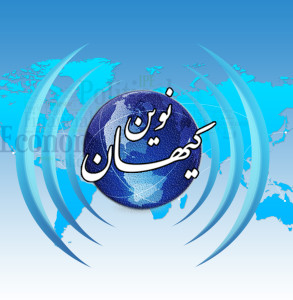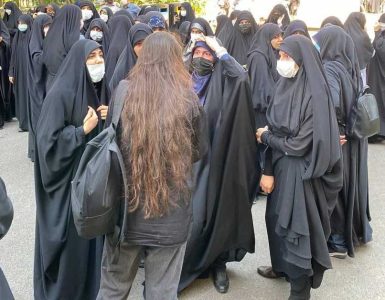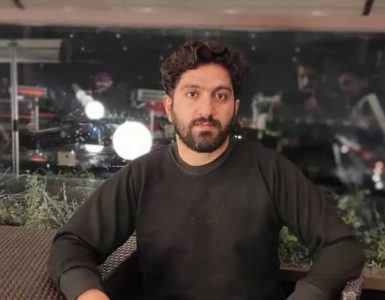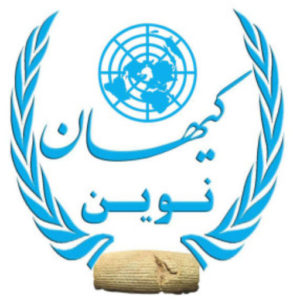اخراج و پاکسازی و سرکوبهای اخیر در دانشگاههای ایران چه «یکدستسازی» و چه «موج جدید انقلاب فرهنگی» و چه «خالصسازی» نامیده شود، ترکشهایی از سر استیصال بر پیکر جنبش دانشجویی و در انتقامجویی از همراهی دانشجویان با جنبش ملّی است.
جمهوری اسلامی شاید فضای دانشگاه را برای مدت کوتاهی دچار خفقان کند، اما این دانشجویان جزیی از همان مردمی هستند که اعتراضات خود را در کف خیابان فریاد میزنند و خواهان آزادی و آبادی میهن هستند.
در شرایطی که سرکوب دانشگاهها سندی بر استیصال حکومت است اما همزمان محرکی برای تقویت پتانسیل اعتراضی در میان دانشجویان و استادان به شمار میرود.
کیهان نوین: در هفتهای که گذشت، حذف اساتید در دانشگاههای مختلف کشور به شکل اخراج، تعلیق، و بازنشستگی اجباری در صدر اخبار قرار گرفته است. دهها استاد دانشگاه طی دو سه هفته گذشته و در آستانه آغاز سال تحصیلی ۴۰۳-۴۰۲ از نظام آموزش عالی حذف شدهاند. در برخی موارد حذف اساتید به صورت فلّهای با بازنشستگی اجباری و البته برخلاف قوانین استخدامی دانشگاه پیش رفته است؛ از جمله بازنشستگی اجباری ۹ تن از اساتید دانشکده علوم انسانی دانشگاه آزاد تهران.
پاکسازی استادان در دانشگاههای دولتی و حتی «آزاد» در شهرهای مختلف کشور صورت گرفته است. استادانی که در دانشکدههای مختلف از علوم انسانی، تا فنی و مهندسی و دامپزشکی تدریس میکردند.
وجه مشترک این اساتید که به اشکال مختلف از تدریس آنها جلوگیری شده، حمایت آنها طی یک سال گذشته از اعتراضات ملّی ۱۴۰۱ و اعتراض به سرکوب شهروندان و همچنین دانشجویان بوده است. واکنش آنها در کلاس درس و محیط دانشگاه و در شبکههای اجتماعی و همچنین امضای بیانیه در همسویی با اعتراضات سال گذشته علت بیرون راندن آنها از دانشگاه است.
در مقابل حذف استادانی که از درجات علمی برجسته برخوردار بوده و سالها سابقه تدریس در دانشگاه دارند، نیروهای «غیرعلمی» و «ارزشی» در کرسیهای تدریس دانشگاهی جاسازی میشوند.
سجاد صفر هرندی فرزند محمدحسین صفار هرندی وزیر ارشاد اسلامی دولت احمدی نژاد، امیرحسین ثابتی مجری شبکه افق صداوسیمای حکومت به عنوان استادان جدید دانشگاهی معرفی شدهاند. عباس موزون دیگر مجری صداوسیمای جمهوری اسلامی نیز قرار است با استخدام در دانشگاه صنعتی «شریف» (آریامهر) به دانشجویان درس «آیین زندگی» بدهد!
پیشتر علی شریفی زارچی استاد دانشگاه «شریف» از فرایندی مخفیانه برای جذب ۱۵۰۰۰ عضو هیئت علمی «همسو» با حکومت در دانشگاهها خبر داده بود. این استاد دانشگاه چند روز بعد خبر اخراج خود را از دانشگاه منتشر کرد.
در آنسو دانشجویان زیادی نیز در هفتههای گذشته حکم تعلیق و یا تبعید به دیگر واحدهای دانشگاهی را دریافت کردهاند و صدها دانشجو در سراسر کشور با احضار به کمیتههای انضباطی و نهادهای امنیتی تهدید شدهاند که در روزهای پیش رو با توجه به فرا رسیدن سالگرد اعتراضات ۴۰۱ هیچ تحرک و فعالیتی در دانشگاهنداشته باشند.
بخش دیگری از پروژه جدید پاکسازی دانشگاهها با تشدید تفکیک جنسیتی در دانشگاهها میان دانشجویان دختر و پسر درجریان است. برای نمونه در دانشگاه فردوسی مشهد، که دانشجویان آن بطور گسترده در اعتراضات سال گذشته فعال بودند، معاون فرهنگی، اجتماعی و دانشجویی خواهان برقراری تفکیک جنسیتی در کلاسها و آزمایشگاههای این دانشگاه شده است. همچنین استفاده از پیامرسانهای خارجی هم ممنوع شده و استادان موظف شدهاند برای تشکیل گروههای علمی از پیامرسانهای داخلی استفاده کنند.
شهرداری تهران نیز بیکار نمانده و طرحی را برای آنلاین کردن دانشگاهها در ۱۰ روز نخست مهرماه به بهانه «ترافیک» دردست بررسی دارد.
فرایندی به بلندای عمر جمهوری اسلامی
در روزهای گذشته برخی از رسانهها در گزارشهایی به موج جدید «انقلاب فرهنگی» از سوی جمهوری اسلامی اشاره داشتهاند.
کانون نویسندگان ایران در بیانیهای روند اخراج و تعلیق اساتید دانشگاه را «تکرار فاجعه تصفیه دهه ۶۰ دانشگاهها» خوانده و اعلام کرده که «این سرکوب مداوم ادامهی تلاش حکومت به قصد خاموش کردن صدای اعتراض و مقاومت دانشجویان و دانشگاهیان است؛ صدایی که از نخستین روزهای جنبش آزادیخواهانهی اخیر بازتاب خواستههای مردم معترض بود و در متن وقایع به گوش میرسید.»
اینهمه در حالیست که «انقلاب فرهنگی» که پس از پیروزی انقلاب ۵۷ و بطور رسمی از سال ۱۳۵۹ در ایران آغاز شد، هرگز متوقف نشد و در تمام چهار دهه گذشته و در دولتهای مختلف اصلاحطلب و اصولگرا تداوم داشته است. برای نمونه سرکوب دانشجویان در ۱۸ تیرماه ۱۳۷۸ در کوی دانشگاه در دولت اصلاحطلب محمد خاتمی رخ داد و او طی سخنانی در همدان اعتراضات دانشجویان را «شورش» و « لطمه به امنیت ملی» و «اهانت به ارزشهای نظام و مقام رهبری» خواند.

همچنین آمارها از روند اخراج اساتید از دانشگاهها نشان میدهد این روزها نخستین موج اخراج و پاکسازی پس از «انقلاب فرهنگی۵۸» که طی آن دانشگاههای کشور دو سال تعطیل ماندند، نیست. در همین رابطه روزنامه «اعتماد» در گزارشی تعداد اساتید اخراج شده در هشت سال دولت احمدینژاد، هشت سال دولت حسن روحانی و دو سالی که از عمر دولت ابراهیم رئیسی گذشته را منتشر کرده است. بر این اساس در دولت احمدینژاد ۸۵ استاد دانشگاه اخراج یا به شکل اجباری بازنشسته شدند. این تعداد در دولت حسن روحانی ۱۴ نفر بوده و در دو سال دولت رئیسی به ۵۸ تن تا هفته گذشته رسیده است. روزنامه «اعتماد» به دلیل وابستگی به جریان اصلاحطلب، آماری از حذف و اخراج و بازنشستگی اساتید در دولت محمد خاتمی ارائه نکرده و اخراج و پاکسازی را نیز «خالصسازی» نامیده است.
این آمار که دقیق نیست و احتمال اینکه شمار استادان اخراجی بیش از اینها باشد زیاد است، نشان میدهد روندی که رسانههای داخلی از آن به عنوان «یکدستسازی دانشگاهها» یاد میکنند در دولت ابراهیم رئیسی به دلیل کارکرد ویژه جنبش دانشجویی در اعتراضات جنبش ملّی تشدید شده است.
سرکوب جنبش دانشجویی، تیری که خطا میرود
جنبش دانشجویی در ایرانِ پس از انقلاب ۵۷ و در دهه هفتاد خورشیدی به ابزاری در دست اصلاحطلبان و در خدمت منافع آنها تبدیل شد. بخش غالب جنبش دانشجویی در آن سالها از حامیان اصلاحطلبان بودند و در مواردی چون انتخابات به عنوان بازوی تبلیغاتی وارد صحنه میشدند. در سالهای گذشته اما این جنبش از خدمت جناحین حکومتی و نقشآفرینی بر صحنهی آراسته از سوی اصلاحطلبان خارج شد. در اعتراضات مردمی دیماه ۹۷ دانشجویان دانشگاه تهران با سر دادن شعار معروف و تعیینکنندهی «اصلاحطلب، اصولگرا، دیگه تمومه ماجرا» پیام روشنی به حکومت مخابره کردند و در کنار مردم قرار گرفتند. فصل جدید جنبش دانشجویی در اعتراضات ۱۴۰۱ نیز خود را به روشنی نشان داد و در اقدامی بیسابقه دانشجویان دانشگاه «علامه» با برافراشتن درفش کاویانی و تظاهرات در محوطه دانشگاه، نه تنها در برابر جناحین جمهوری اسلامی، بلکه در برابر ایده انقلاب ۵۷ نیز ایستادند.
اخراج و پاکسازی و سرکوبهای اخیر در دانشگاههای ایران چه «یکدستسازی» و چه «موج جدید انقلاب فرهنگی» و چه «خالصسازی» نامیده شود، ترکشهایی از سر استیصال بر پیکر جنبش دانشجویی و در انتقامجویی از همراهی دانشجویان با جنبش ملّی است.
اطلاعیه بیسابقه وزارت کشور در حمایت از اخراج استادان و حمایت ابراهیم رئیسی از این روند، و اظهارات برخی مقامات از جمله حسین سلامی فرمانده کل سپاه پاسداران انقلاب اسلامی و مصطفی رستمی رئیس نهاد نمایندگی خامنهای در دانشگاهها نشان میدهد آنچه در جریان است برآیند هفکری بخشهای مختلف نظام و اتاقهای امنیتی آن است.
جمهوری اسلامی در ماههای گذشته هرچند دامنهی سرکوب را در میان فعالان سیاسی، مدنی، دادخواهان و دانشجویان و اکنون اساتید دانشگاه گسترش داده و در طرح «عفاف و حجاب» نیز کل شهروندان هدف قوانین سرکوبگرانه قرار گرفتهاند اما ناخواسته هراس و نگرانی خود را از آغاز دوباره اعتراضات سراسری در سالگرد جنبشی که با قتل حکومتی مهسا امینی شکل گرفت، به روشنی به نمایش میگذارد.
در شرایطی که سرکوب دانشگاهها سندی بر استیصال حکومت است اما همزمان محرکی برای تقویت پتانسیل اعتراضی در میان دانشجویان و استادان به شمار میرود. جمهوری اسلامی در چنان بنبستی قرار گرفته که با تاکتیکهای کوتاهمدت و بدون توجه به عوارض و نتایج بلندمدت این اقدامات، به دنبال افزودن بر عمر حکومت است.
یکی از اشتباهات تحلیلی نهادهای امنیتی، عدم درک واقعی از موج ملّی آزادیخواهی علیه جمهوری اسلامی است. این موج از درون دانشگاهها برنخاسته که حالا با پاکسازی دانشگاه و اخراج استادان بتوان سدشکنی در مقابل آن ایجاد کرد. اعتراضات ۱۴۰۱ به روشنی نشان داده همه ملت ایران، از سیستان و بلوچستان تا کردستان، از خوزستان تا گیلان، از خراسان تا فارس و کرمان و هرمزگان، یکپارچه در برابر حکومتی ایستاده که بیش از چهار دهه کشور و مردم را بطور مداوم از آزادی و آبادی دور نگه داشته است. در چنین شرایطی سرکوب دانشگاهها با هدف هراسآفرینی یا جلوگیری از شکل گرفتن هستههای اعتراضی در محیط دانشگاهی و حتی تسویه حساب بینجناحی با حذف برخی اساتید اصلاحطلب، شاید فضای دانشگاه را برای مدت کوتاهی دچار خفقان کند، اما این دانشجویان جزیی از همان مردمی هستند که اعتراضات خود را در کف خیابان و با سپر کردن جان و تن در برابر سرکوبگرانِ تا دندان مسلح حکومت فریاد میزنند و خواهان آزادی و آبادی میهن هستند.
New Universe:
Whether it is called “unification” or “new wave of cultural revolution” or “purification”, recent expulsions and purges and repressions in Iranian universities are splinters of desperation on the body of the student movement and in revenge for students’ association with the national movement.
The Islamic Republic may suffocate the atmosphere of the university for a short period of time, but these students are part of the same people who shout their protests on the street and want the freedom and prosperity of the country.
In a situation where the suppression of universities is a document of the government’s desperation, but at the same time it is considered a stimulus to strengthen the protest potential among students and professors.
In the past week, the elimination of professors in various universities of the country in the form of dismissal, suspension, and forced retirement has been in the news. Dozens of university professors have been removed from the higher education system in the last two or three weeks and on the eve of the beginning of the academic year 403-402. In some cases, the mass removal of professors has been carried out with forced retirement and of course against the employment rules of the university; including the compulsory retirement of 9 professors of the Faculty of Human Sciences of Tehran Azad University.
Purification of professors in public and even “free” universities has taken place in different cities of the country. Professors who taught in different faculties from humanities to technical and engineering and veterinary medicine.
The common denominator of these professors, who have been prevented from teaching in various ways, has been their support for the 2022 national protests and protest against the repression of citizens and students over the past year. Their reaction in the classroom and university environment and on social networks, as well as signing a statement in line with last year’s protests, is the reason for their expulsion from the university.
In contrast to the elimination of professors who have outstanding scientific degrees and have years of teaching experience in universities, “non-scientific” and “valuable” forces are embedded in university teaching positions.
Sajjad Safar Harandi, the son of Mohammad Hossein Safar Harandi, the Minister of Islamic Guidance of the Ahmadinejad government, Amir Hossein Thabiti, the anchor of the government’s Ogh TV channel, have been introduced as new university professors. Abbas Mozon, another presenter of the Islamic Republic of Iran Radio and Television, is also going to teach students about “Ritual of Life” by being hired at “Sharif” University of Technology (Aryamhar).
Earlier, Ali Sharifi Zarchi, the professor of “Sharif” University, announced a secret process to recruit 15,000 faculty members “aligned with the government” in universities. This university professor published the news of his dismissal from the university a few days later.
On the other hand, many students have been suspended or exiled to other university units in the past weeks, and hundreds of students across the country have been threatened with summonses to disciplinary committees and security institutions. Do not have mobility and activity in the university.
Another part of the new project to clean up the universities is going on by intensifying the gender segregation in the universities between male and female students. For example, in Ferdowsi University of Mashhad, whose students were widely active in last year’s protests, the cultural, social and student vice-chancellor has demanded gender segregation in the classes and laboratories of this university. Also, the use of foreign messengers is prohibited and professors are obliged to use internal messengers to form scientific groups.
Tehran Municipality has not remained idle and is considering a plan to bring universities online in the first 10 days of October under the pretext of “traffic”.
A process as long as the life of the Islamic Republic
In the past few days, some media have mentioned the new wave of “cultural revolution” by the Islamic Republic in their reports.
In a statement, the Iranian Writers Association called the expulsion and suspension of university professors a “repetition of the disaster of the 60s purge of universities” and declared that “this continuous repression is the continuation of the government’s attempt to silence the voice of protest and resistance of students and academics; A voice that reflected the demands of the protesting people from the first days of the recent liberal movement and was heard in the text of the events.
All this while the “Cultural Revolution” which officially started in Iran in 1979 after the victory of the 1979 revolution, has never stopped and has continued throughout the past four decades under various reformist and fundamentalist governments. For example, on July 18, 1999, the repression of students took place in the university campus during the reformist government of Mohammad Khatami, and during a speech in Hamedan, he called the student protests “rebellion” and “damage to national security” and “insult to the values of the system and leadership”.
Also, the statistics of the process of dismissal of professors from universities show that these days are not the first wave of dismissals and purges after the “Cultural Revolution of 1979” during which the country’s universities were closed for two years. In this regard, “Etimad” newspaper has published a report on the number of professors fired during the eight years of Ahmadinejad’s administration, eight years of Hassan Rouhani’s administration, and two years of Ebrahim Raeesi’s administration. Based on this, 85 university professors were dismissed or forced to retire in Ahmadinejad’s government. This number was 14 people in Hassan Rouhani’s government, and in the two years of the president’s government, it reached 58 people until last week. Due to its affiliation with the reformist movement, “Etemad” newspaper did not provide statistics on the dismissal and retirement of professors in the government of Mohammad Khatami and called the dismissal and purge “cleansing”.
This statistic, which is not accurate and the probability that the number of fired professors is more than these, shows that the process that the domestic media refers to as “unification of universities” has intensified in the government of Ebrahim Raisi due to the special function of the student movement in the protests of the national movement. Is.
Suppression of the student movement, an arrow that goes wrong
The student movement in Iran after the 1979 revolution and in the 1970s became a tool in the hands of the reformists and served their interests. The majority of the student movement in those years were supporters of the reformists and entered the stage as a propaganda arm in cases such as elections. In the past years, however, this movement left the service of the government factions and played a role on the decorated stage by the reformists. In the public protests of January 2017, the students of Tehran University sent a clear message to the government by chanting the famous and decisive slogan “reformist, fundamentalist, it’s over” and stood by the people. The new chapter of the student movement in the 2022 protests also showed itself clearly, and in an unprecedented action, the students of “Allameh” University stood not only against the factions of the Islamic Republic, but also against the idea of the 1957 revolution by raising Kaviani flags and demonstrating in the university campus.













